Cabinet 01 - The Transactions
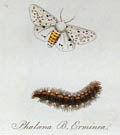 The Linnean Society of London was founded on 26th February 1788 at the Marlborough Coffee House, London; it was formally instituted on the 18th March 1788. Seven scholarly men were involved: James Edward Smith (1759-1828), Dr Samuel Goodenough (1743-1827), Thomas Marsham (1747/8-1819), Jonas Dryander (1748-1810), James Dickson (1738-1822), John Beckwith, and John Timothy Swainson (1757-1824). The Society's title commemorates the great Swedish naturalist Carl Linnaeus (1707-1778), whose collections and library it acquired through Smith, the Society's first president. In 1802, the Society obtained a Royal Charter from George III, which formulated it's role: the 'cultivation of the science of natural history…'. This is the first issue of the Transactions (1791) and it highlights Thomas Marsham's paper on moths.
The Linnean Society of London was founded on 26th February 1788 at the Marlborough Coffee House, London; it was formally instituted on the 18th March 1788. Seven scholarly men were involved: James Edward Smith (1759-1828), Dr Samuel Goodenough (1743-1827), Thomas Marsham (1747/8-1819), Jonas Dryander (1748-1810), James Dickson (1738-1822), John Beckwith, and John Timothy Swainson (1757-1824). The Society's title commemorates the great Swedish naturalist Carl Linnaeus (1707-1778), whose collections and library it acquired through Smith, the Society's first president. In 1802, the Society obtained a Royal Charter from George III, which formulated it's role: the 'cultivation of the science of natural history…'. This is the first issue of the Transactions (1791) and it highlights Thomas Marsham's paper on moths.
Thomas Marsham, 'Observations on the Phalaena Bombyx Lubricipeda of Linneus', Vol. I. The Transactions of the Linnean Society of London. London: Printed by J. Davis, 1791. DeB Ec 1791 T
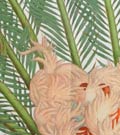 The first ten volumes of the Society's Transactions are housed in Special Collections. On display are A. B. Lambert's 'Description of a New Species of Macropus from New Holland', including a wonderful image of a kangaroo, from volume eight (1807), Thomas Marsham's 'Observations on the Phalaena Bombyx Lubricipeda of Linneus', from volume one (1791), and James Edward Smith's 'Description of the Fruit of Cycas revoluta', the King Sago Palm tree, with its colourful plate from volume six (1802). The Transactions - both then and now - provide an excellent forum for communication and scientific discourse.
The first ten volumes of the Society's Transactions are housed in Special Collections. On display are A. B. Lambert's 'Description of a New Species of Macropus from New Holland', including a wonderful image of a kangaroo, from volume eight (1807), Thomas Marsham's 'Observations on the Phalaena Bombyx Lubricipeda of Linneus', from volume one (1791), and James Edward Smith's 'Description of the Fruit of Cycas revoluta', the King Sago Palm tree, with its colourful plate from volume six (1802). The Transactions - both then and now - provide an excellent forum for communication and scientific discourse.
James Edward Smith, 'Description of the Fruit of Cycas revoluta', Vol. VI. The Transactions of the Linnean Society of London. London: Printed by Wilks and Taylor, 1802. DeB Ec 1791 T
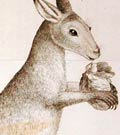 The Transactions promote all aspects of pure and applied biology, including genetics, ecology, anatomy, physiology, palynology (pollens and spores), biochemistry, palaeontology, and population studies concerned with the diversity, interrelationship and habits of organisms both living and extinct, as well as their taxonomy, the science of classification according to a pre-determined system. Here is A. B. Lambert's brief paper on the pretty-faced or whiptail wallaby, which was originally tagged with the binominal nomenclature of Macropus elegans by the French naturalist Baron Georges Cuvier (1769-1832) after the illustration by fellow French naturalist, anthropologist and explorer François Péron (1775-1810). The wallaby has now been reclassified as M. parryi.
The Transactions promote all aspects of pure and applied biology, including genetics, ecology, anatomy, physiology, palynology (pollens and spores), biochemistry, palaeontology, and population studies concerned with the diversity, interrelationship and habits of organisms both living and extinct, as well as their taxonomy, the science of classification according to a pre-determined system. Here is A. B. Lambert's brief paper on the pretty-faced or whiptail wallaby, which was originally tagged with the binominal nomenclature of Macropus elegans by the French naturalist Baron Georges Cuvier (1769-1832) after the illustration by fellow French naturalist, anthropologist and explorer François Péron (1775-1810). The wallaby has now been reclassified as M. parryi.
A. B. Lambert, 'Description of a New Species of Macropus from New Holland', Vol. VIII. The Transactions of the Linnean Society of London. London: Printed by Richard Taylor and Co., 1807. DeB Ec 1791 T
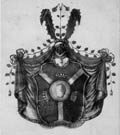 Carl Linnaeus was ennobled in 1761. On display is the coat of arms designed for him by the State Herald. Linnaeus attempted to design his own coat of arms incorporating the concepts of Nature and the three kingdoms of Nature (Blunt). His design was turned down.
Carl Linnaeus was ennobled in 1761. On display is the coat of arms designed for him by the State Herald. Linnaeus attempted to design his own coat of arms incorporating the concepts of Nature and the three kingdoms of Nature (Blunt). His design was turned down.
Linnaeus's coat of arms, [photograph]. With kind permission from the Linnean Society of London.
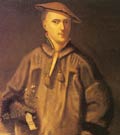 Carl Linnaeus, about thirty years old, is depicted here wearing his Lapland costume in a mezzotint by Dunkarton, which was based on a painting by M. Hoffman (Blunt).
Carl Linnaeus, about thirty years old, is depicted here wearing his Lapland costume in a mezzotint by Dunkarton, which was based on a painting by M. Hoffman (Blunt).
